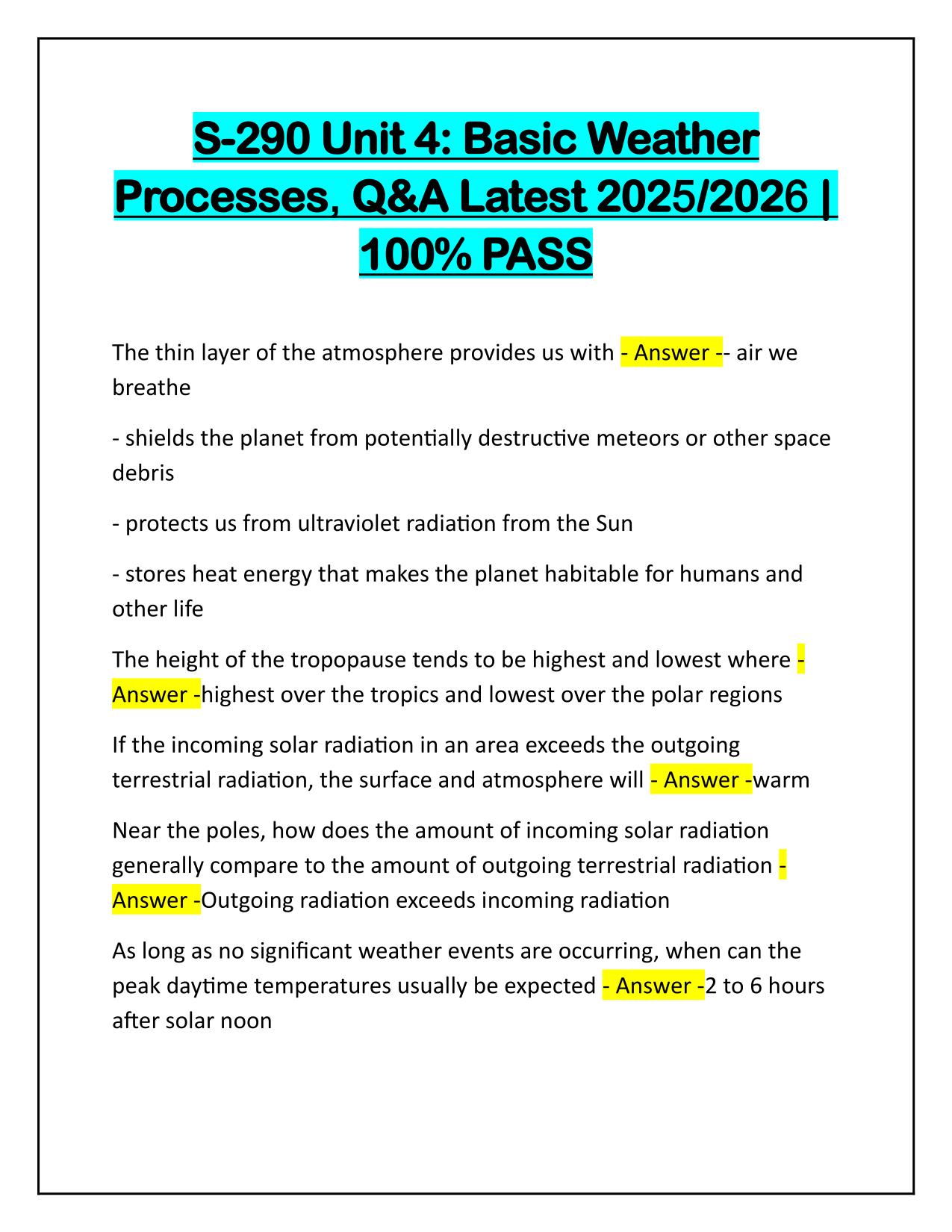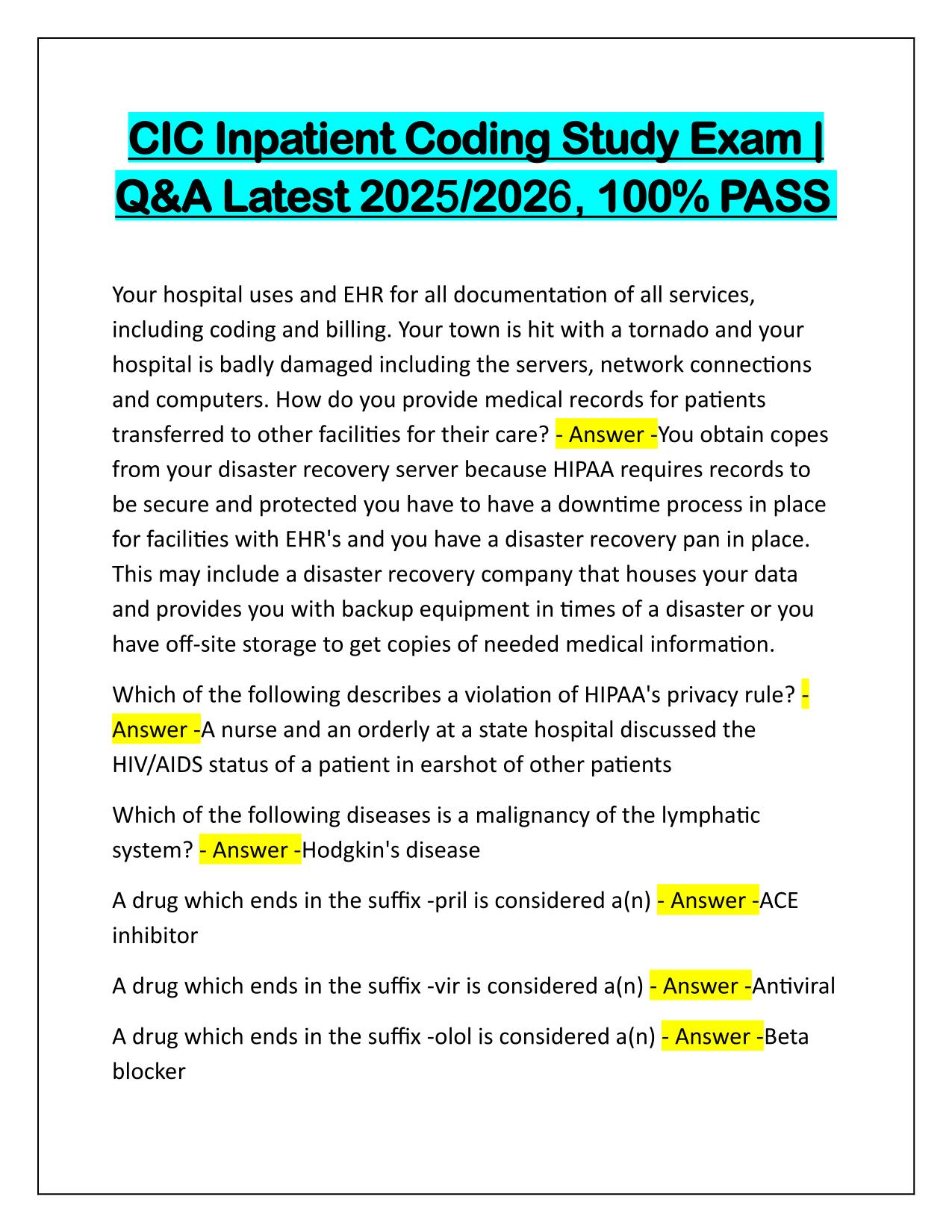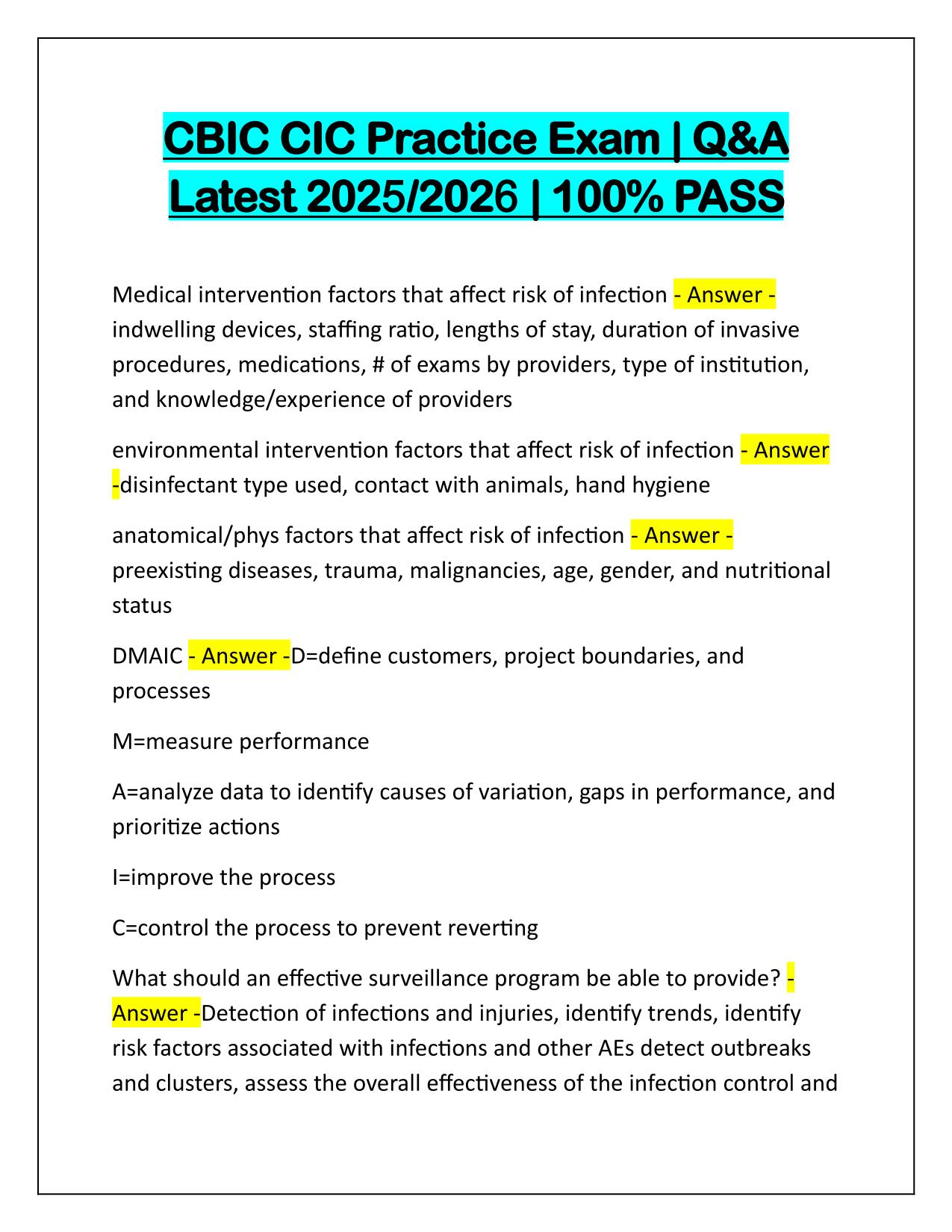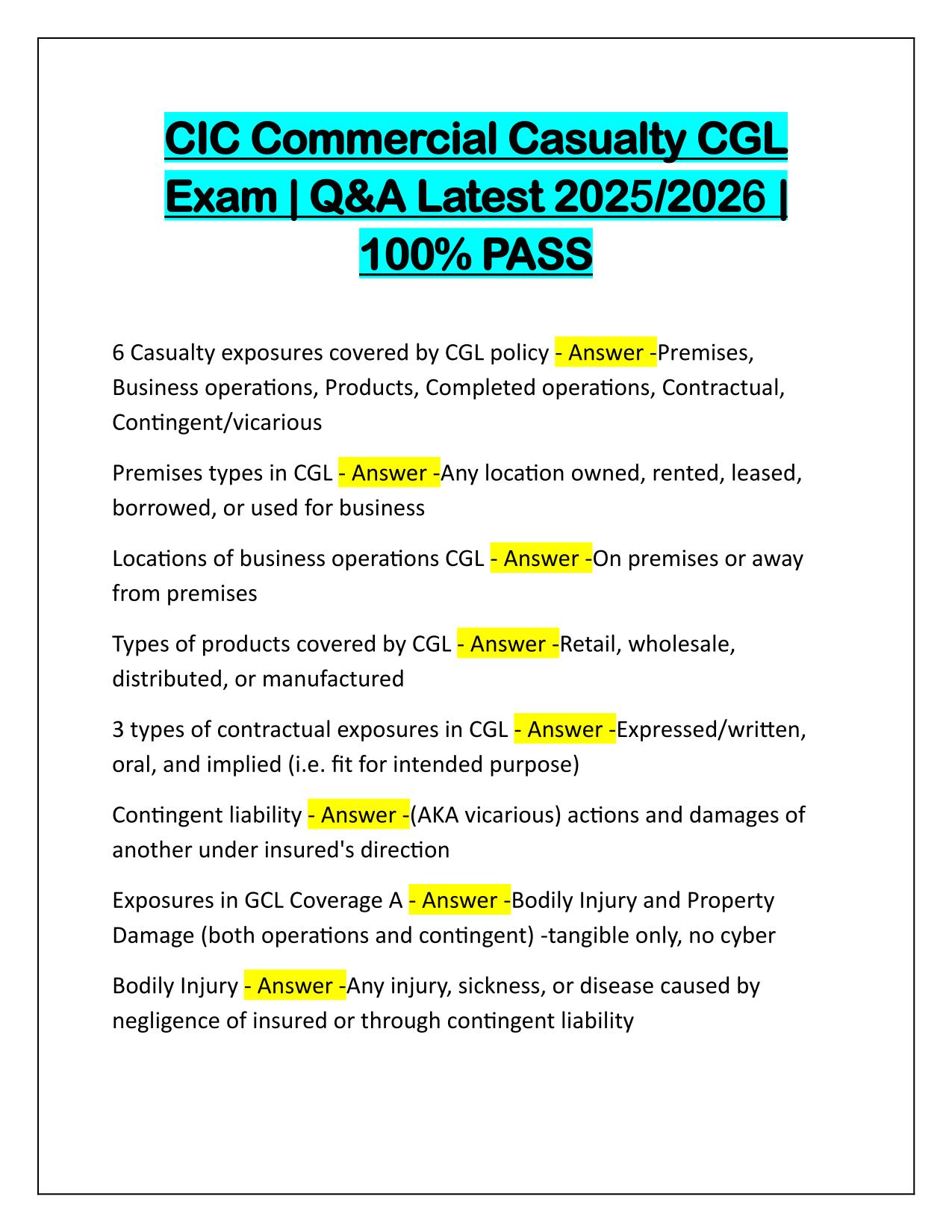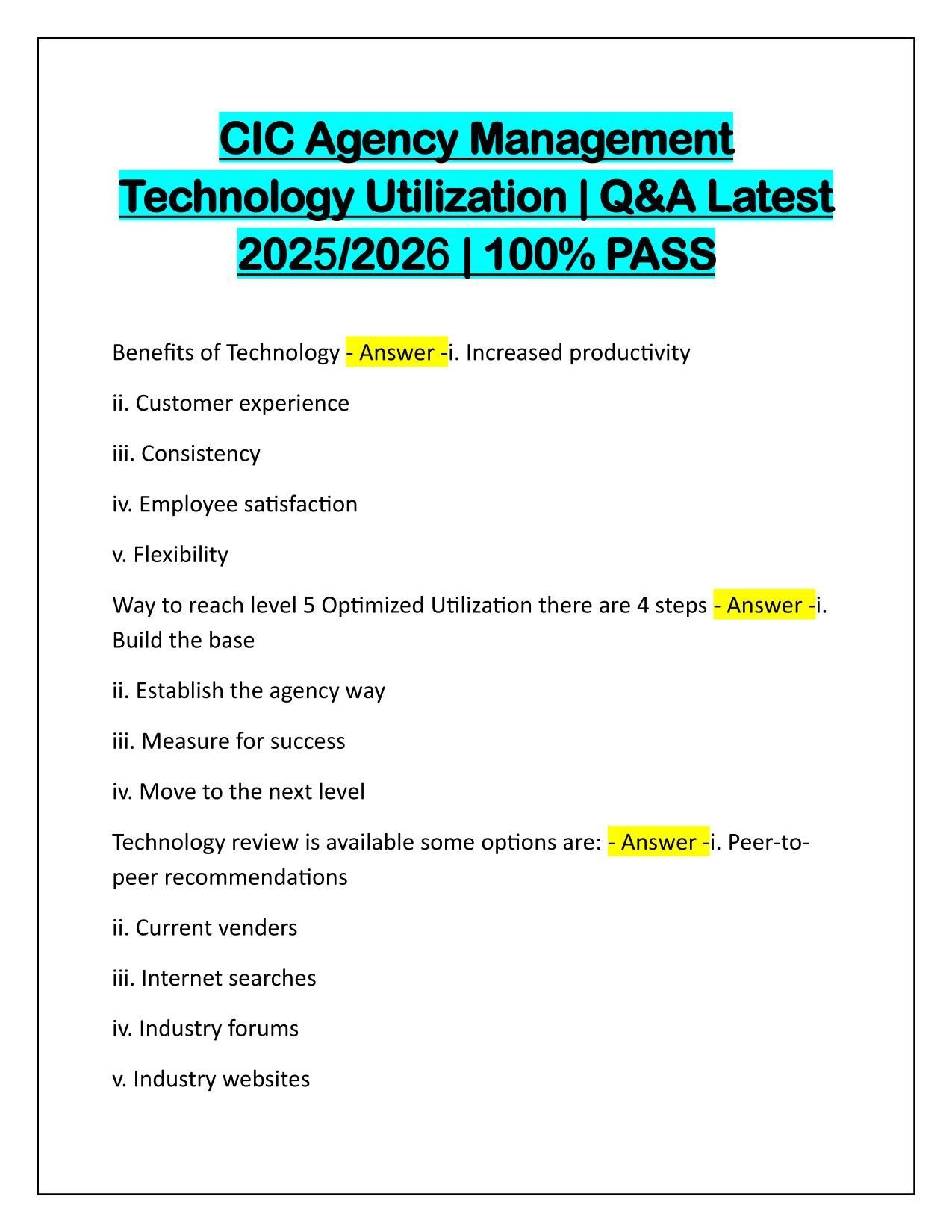S-290 Unit 4: Basic Weather Processes Q&A Latest Update 2025
Course:
S-290
Institution:
S-290
S-290 Unit 4: Basic Weather Processes Q&A Latest Update 2025
After purchase, you get:
✅ Instant PDF Download
✅ Verified answer explanations
✅ Refund if not Satisfied
✅ Prepared for 2025/2026 test cycle
Document Information
| Uploaded on: | April 28, 2025 |
| Last updated: | May 2, 2025 |
| Number of pages: | 5 |
| Written in: | 2025/2026 |
| Type: | Exam (elaborations) |
| Contains: | Questions & Answers |
| Tags: | S-290 Unit 4: Basic Weather Processes Q&A Latest Update 2025 |
Seller Information

AdelineJean
User Reviews (0)
Exam (Elaborations)
$8.00
Add to Cart
100% satisfaction guarantee
Refund Upon dissatisfaction
Immediately available after purchase
Available in Both online and PDF
$8.00
| 0 sold
Related Documents
Content Preview
S-290 Unit 4: Basic Weather Processes, Q&A Latest 2025/2026 | 100% PASS The thin layer of the atmosphere provides us with - Answer -- air we breathe - shields the planet from potentially destructive meteors or other space debris - protects us from ultraviolet radiation from the Sun - stores heat energy that makes the planet habitable for humans and other life The height of the tropopause tends to be highest and lowest where Answer -highest over the tropics and lowest over the polar regions If the incoming solar radiation in an area exceeds the outgoing terrestrial radiation, the surface and atmosphere will - Answer -warm Near the poles, how does the amount of incoming solar radiation generally compare to the amount of outgoing terrestrial radiation Answer -Outgoing radiation exceeds incoming radiation As long as no significant weather events are occurring, when can the peak daytime temperatures usually be expected - Answer -2 to 6 hours after solar noon
